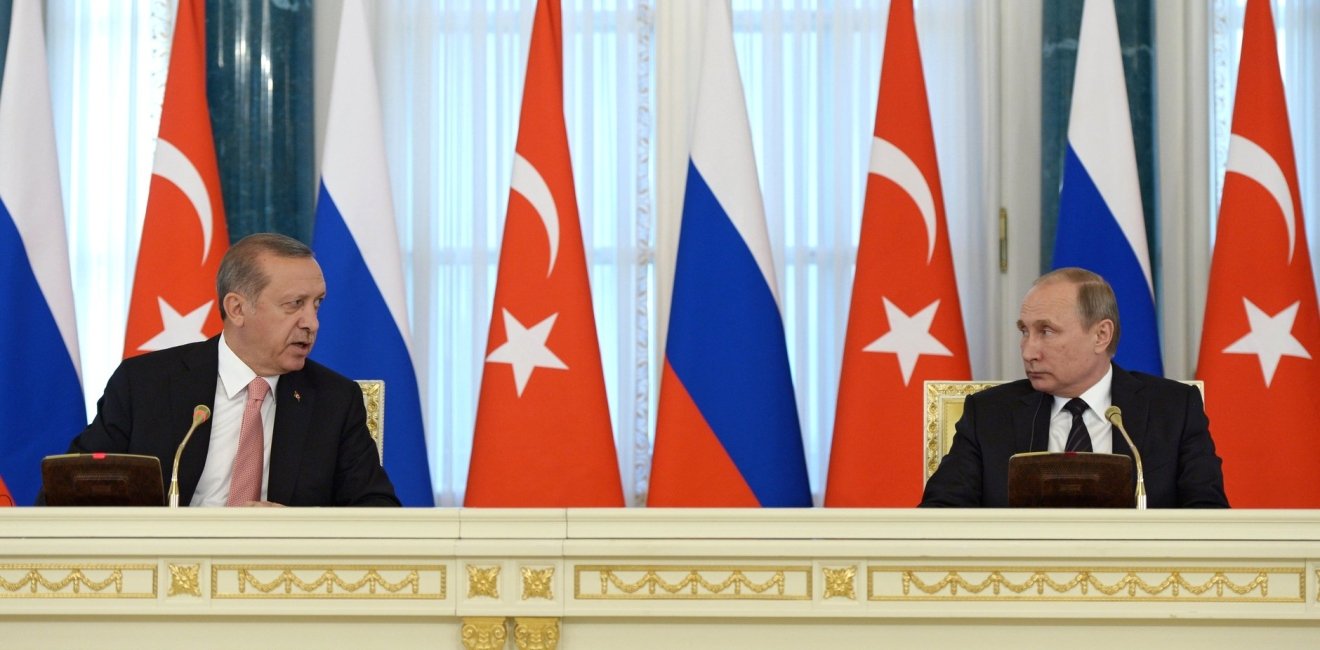
A blog of the Kennan Institute
With the fall of the Eastern bloc and the Soviet Union (1989–91), Eastern Europe, a huge region extending from the Northern Ocean to the Bosporus and from the Ural Mountains to the Adriatic Sea, became the scene of dramatic political and socioeconomic change. A sense of optimism prevailed among observers, coloring interpretations of the diverse events unfolding in each society and across the region as a whole since 1989. The end of the communist experiment spurred hope for greater freedoms and human rights in post-communist and post-Soviet countries. The subsequent illiberal turn in the East has taken many by surprise.
The optimistic view, shared by politicians, analysts, and the general public, was first framed in terms of transition theory: it was believed that Eastern European societies, following “the normal path of history,” would find their way to liberal democracy and capitalism. That foundational belief inspired the engineers of new states and economies and contributed to the boosterism of experts monitoring the institutionalization of political liberties and economic freedoms. Freedom House’s Freedom in the World index was created within the penumbra of this theoretical approach.
By the beginning of the twenty-first century, however, the full-throated belief that the “normal” course of history would prevail had evolved into the more sober optimism of democratization theory. The slow progress in Eastern Europe, along with some notable instances of recidivism, was seen as a temporary if unpleasant reality that could still result in post-communist countries achieving the expected goals of democratization and free markets. The case of Slovakia, which first lagged its neighbor the Czech Republic before making fast progress between 2001 and 2004, fed this optimism. The Economist Intelligence Unit’s (EIU’s) Democracy Index seems to have been the fruit of this stage of thinking about transition.
These two approaches to assessing the development of freedom in Eastern Europe are solid and well grounded. However, their focus on the establishment of formal democratic institutions tends to crowd out of the analysis the growth of informal power institutions and the spread of illiberal sympathies. This oversight has led to Belarus, for example, being described in Western academic circles as “the last dictatorship,” whereas it might more realistically be considered the first authoritarian regime established after the fall of communism.
In contradistinction to the aspirational views promulgated by forward-looking transition theorists, the complex processes of state-, economy-, and nation-building in the post-communist countries have taken place under conditions of ruined power institutions, economic chaos, and frayed social safety systems. As Balint Magyar argues in his seminal book, Post-Communist Mafia States, the post-communist transition started not from a tabula rasa but from the specific experience of societies living in totalitarian systems. And that startpoint would perforce shape subsequent developments as states sought to reinvent themselves.
Entrenched habits stemming from surviving in a totalitarian system, as well as the ungrounded optimism of the new state builders, drove a certain bilateral development in the post-communist states. On the surface, such societies did indeed establish democratic institutions and a form of market economy. Beneath the surface, however, quite different ways of doing politics and business were brewing. Informal power networks arose, called “mafias” (by Magyar) or “patronal networks” (by Henry Hale). These networks or clans, disregarding the distinction between public and private spheres, began controlling political processes and major financial flows; they also provided their members with some safety in the hugely risky new societies. Thus, in realistic terms, the post-communist transition began taking shape through the creation of new political and economic systems with a Western-like façade and a patronal core. In Western circles this phenomenon began to be referred to as systemic corruption.
So, if one were to disregard the optimistic view on the East and apply a more realistic lens, Eastern Europe would come into focus as a region with strong authoritarian tendencies supported by the spread of illiberalism locally. Both the Freedom House and EIU indexes have lagged in identifying the uptick in authoritarianism and illiberalism because they principally pick up on the façade elements—the creation of better institutions for governance, justice, trade, and the like. Attention to the patronal underworld, however, leads to a sharply different picture of Europe’s East.
My research into political systems suggests that the diversity of Eastern European regimes with a patronal core can be segmented into four types. This differentiation is based on the degree to which patronal politics has succeeded in institutionalizing itself and how strongly it is supported by local elites and populations.
The first type is outright authoritarianism. It became established in recent decades in Azerbaijan, Belarus, and Russia. Here patronal politics was established in the form of a power vertical, a system that renders all branches of power and all central and local governments subservient to one center of power. Because of its slow pace of growth in the Eastern European context and, often, tacit acceptance by the population, outright authoritarianism does not require mass repression and functions with substantial support from the societies in which it operates.
The second type can be described as competitive authoritarianism. It is seen predominantly in Armenia, Georgia, Moldova, and Ukraine. In this system also, informal power networks prevail over formal ones. However, the level of competition is so high that whenever one clan tries to establish its own power vertical, the others undermine it in cooperation with wider social groups. Confrontation between affected parties can lead to street protests that escalate and engulf the state in revolution (as happened with the Ukraine’s Euromaidan and Armenia’s recent protests), Owing to interclan competition, there always is some level of political pluralism and space for civil freedoms. However, the risks of revolt, poverty, and potentially secession are very high.
The third type of Eastern European political system formed around a patronal core is conservative illiberal democracy. In Hungary, Latvia, Lithuania, and Poland, informal structures compete with formal ones. The latter were developed in the past thirty years under Western supervision but have fallen short in achieving local buy-in. More and more, democracy in such countries means majority rule, not the rule of law. The maturation of an ethnocratic populism and its gradual undermining of democratic achievements is especially apparent in Hungary and Poland.
The fourth type of Eastern European regime is authoritarian warlordism in nonrecognized states. This type of system, which remains outside Freedom House or EIU metrics, today is represented by six parastates: Abkhazia and South Ossetia (which seceded from Georgia in the early 1990s), Nagorny Karabakh (which seceded from Azerbaijan in the early 1990s), Transnistria (which seceded from Moldova in the early 1990ies), and the two territories that seceded from Ukraine beginning in 2014, the Luhansk People’s Republic and Donetsk People’s Republic. More than four million Europeans live in these polities, which are run by either warlords or security staff overseeing hybrid local self-governing administrations and poor economies. These para-states are under international sanctions and are excluded from international trade. However, they enjoy stable support from a “sponsor state” (Russia in most cases) and have an outsized influence on all European secessionist movements.
Together with Turkey, a newly authoritarian and repressive state in southeastern Europe, the authoritarian belt in Europe’s East manifests a bleak geopolitical reality characterized by disregard for EU borders, international order, and liberal democracy. Illiberalism and patronalism are contagious and pose a risk of spreading to other Eastern and Central European countries.
Nonetheless, the picture is not all grim: several countries in the region have bucked the trend toward authoritarianism and continued alternative development paths. Romania, Estonia, and Macedonia have all shown some improvements in advancing the rule of law and good governance in recent years. It is quite likely that when the informal institutions exhaust their resources, the region will embark on a new cycle of development. In such a scenario, a return to a liberal agenda and the resetting of political systems would heavily rely on the experience of the latter countries in Europe’s East.
Author


Kennan Institute
After more than 50 years as a vital part of the Wilson Center legacy, the Kennan Institute has become an independent think tank. You can find the current website for the Kennan Institute at kennaninstitute.org. Please look for future announcements about partnership activities between the Wilson Center and the Kennan Institute at Wilson Center Press Room. The Kennan Institute is the premier US center for advanced research on Eurasia and the oldest and largest regional program at the Woodrow Wilson International Center for Scholars. The Kennan Institute is committed to improving American understanding of Russia, Ukraine, Central Asia, the South Caucasus, and the surrounding region through research and exchange. Read more

Explore More in Focus Ukraine
Browse Focus Ukraine
Talking to the Dead to Heal the Living

Ukrainian Issue in Polish Elections


